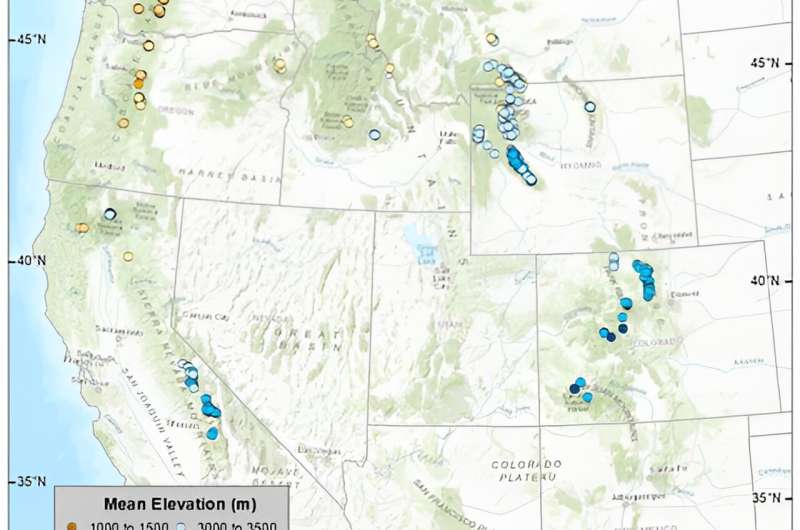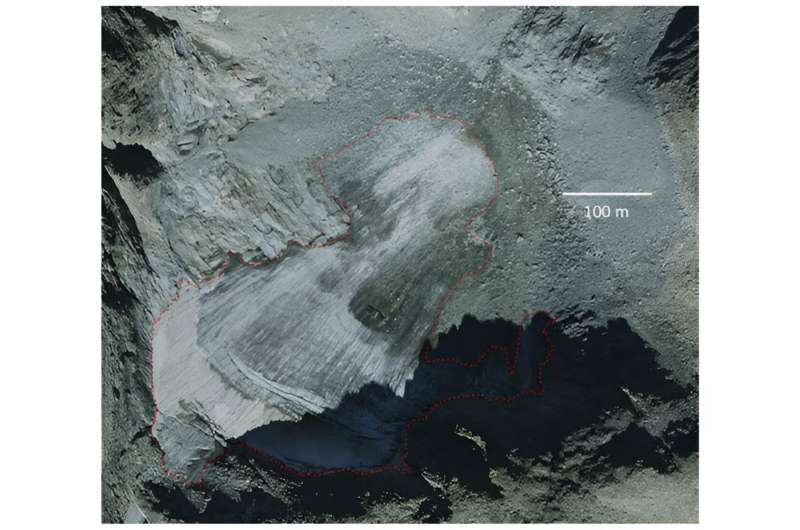This article has been reviewed according to Science X's editorial process and policies. Editors have highlighted the following attributes while ensuring the content's credibility:
fact-checked
trusted source
proofread
Glaciers are becoming smaller and disappearing, finds new inventory

The Western United States is losing its glaciers.
A new inventory from Portland State University researchers show that some glaciers have disappeared entirely, some no longer show movement, some are too small to meet the 0.01 square kilometer minimum and some are actually rock glaciers—rocky debris with ice in the pore spaces.
Andrew Fountain, a geology professor emeritus at Portland State University, and research assistant Bryce Glenn, inventoried glaciers and perennial snowfields in the western continental U.S. using aerial and satellite imagery between 2013 and 2020. The inventory, published in the journal Earth System Science Data, identified 1,331 glaciers and 1,176 perennial snowfields.
It updates a mid-20th century inventory, derived from U.S. Geological Survey topographic maps made over a 40-year span, and provides a baseline for estimating future changes amid a warming climate.
"Glaciers are disappearing and this is a quantification of how many around us have disappeared and will probably continue to disappear," Fountain said.
The new inventory excludes 52 of the 612 officially named glaciers because they are no longer glaciers. The official names are those listed in the federal Geographic Names Information System—the nation's repository for the names and locations of landscape features. Milk Lake Glacier in Washington's Mt. Baker-Snoqualmie National Forest and Wyoming's Hooker Glacier have disappeared altogether; 25 were instead classified as perennial snowfields, which unlike glaciers don't move; 18 had areas smaller than the commonly used threshold of 0.01 square kilometers or roughly the size of two football fields side-by-side; and seven were considered rock glaciers.

The loss of glaciers impacts more than aesthetics. Glaciers act as a natural regulator of stream flow, Fountain said. They melt a lot during hot dry periods and don't melt much during cool rainy periods. As glaciers shrink, they have less ability to buffer seasonal runoff variations and watersheds become more susceptible to drought. Retreating glaciers also leave behind sharp, steep embankments on either side, which can collapse and result in catastrophic debris flows. Globally, the loss of glaciers is also a major contributor to sea level rise.
Fountain's co-authors are Bryce Glenn, a PSU alum and research analyst, and Christiopher McNeil, a geophysicist with the USGS' Alaska Science Center. Looking ahead, the group is studying the volume change of the glaciers to see how much ice they've lost since the USGS mapping.
More information: Andrew G. Fountain et al, Inventory of glaciers and perennial snowfields of the conterminous USA, Earth System Science Data (2023). DOI: 10.5194/essd-15-4077-2023
Provided by Portland State University



















